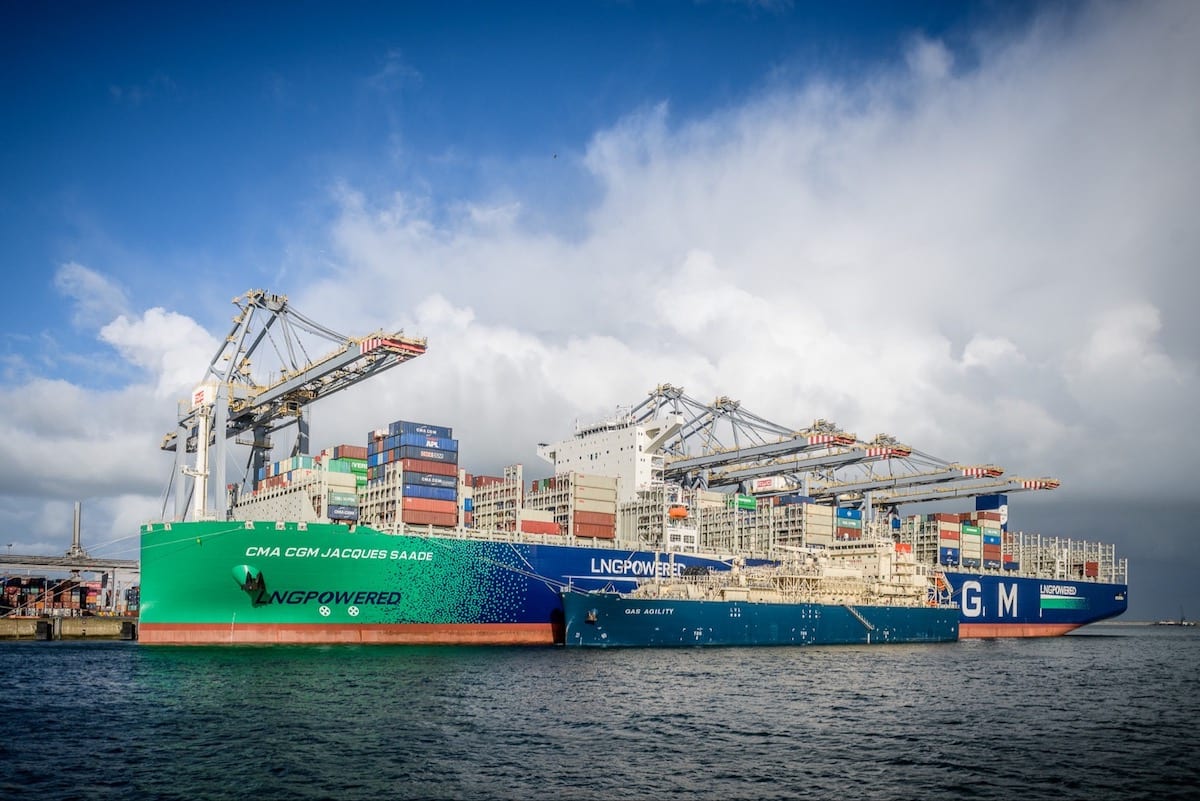The logo of Japanese shipping company Mitsui O.S.K. Lines is seen at the company’s head office in Tokyo July 20, 2009. REUTERS/Stringer/File Photo
By David Fickling
(Bloomberg Gadfly) — A business is rarely more than the sum of its parts. That’s a problem for anyone hoping that combining Japan’s big three container-shipping lines will produce a stronger company.
Shares of Mitsui O.S.K. Lines Ltd., Nippon Yusen KK, and Kawasaki Kisen Kaisha Ltd. surged Monday as news leaked of their plans to combine their box-ship fleets to create the world’s sixth-biggest line.
The trio would take roughly one-third stakes in the combined line, and hope to save about 110 billion yen ($1.05 billion) a year from the deal when it’s completed in July 2017, the companies said at a briefing in Tokyo.
The problem is, that synergy number looks ambitious — and if it falls short, the players haven’t really improved their position much.
Target annual saving: 110 billion yen
Currently, all three lines combine container operations that consistently lose money with bulk shipping businesses that (perhaps surprisingly, given the Baltic Dry index’s record low earlier this year) mostly make a profit.
That balance has helped keep the companies as a whole more or less in the black, but it doesn’t change the fact that nobody really is making a profit in Japanese container shipping. Put the lines together without synergies and you have a business that’s lost an average 8.7 billion yen each quarter over the past five years, and made a profit in just four out of 20 quarters.
The promised 110 billion yen in annual synergies — or 27.5 billion a quarter — would change things dramatically. But is it achievable?
That sum amounts to about 6 percent of annual profits over the past five years, which sounds modest until you consider the wafer-thin operating margins of the global shipping trade. At A.P. Moeller-Maersk A/S’s eponymous container line, the world’s biggest and no slouch when it comes to efficiency, operating income over the past decade averaged out at 3 percent.
The best margin achieved by any of the three Japanese companies’ overall operations since the start of 2012 has been 4.3 percent, and the average was 1 percent.
Perhaps there’s waste within these businesses that can be eliminated by the planned combination. If so, however, they must have been setting bundles of 10,000-yen notes on fire the past three years when the rest of the industry was tightening its belts. Should the promised synergies not emerge, the players will have swapped 100 percent stakes in mid-sized loss-making shipping lines for smaller stakes in one big loss-making shipping line.
In an industry awash in excess capacity, that doesn’t look like a very dramatic step forward.
This column does not necessarily reflect the opinion of Bloomberg LP and its owners.
Unlock Exclusive Insights Today!
Join the gCaptain Club for curated content, insider opinions, and vibrant community discussions.

 Join The Club
Join The Club













